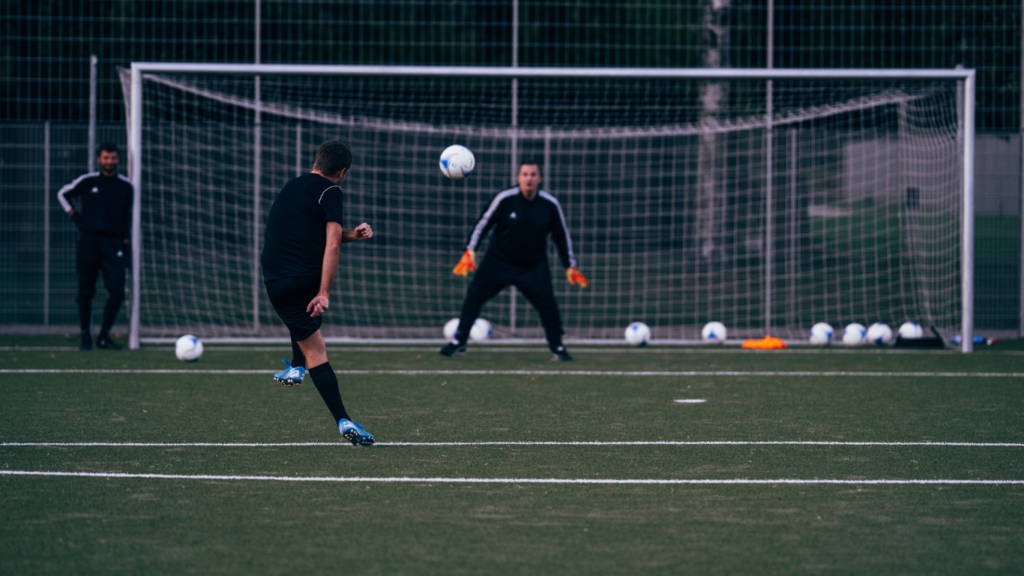The Art of Tiki-Taka
In the world of football, strategies and styles come and go, but few have had the transformative impact of tiki-taka. Rooted in precise passing, intelligent positioning, and relentless ball retention, tiki-taka represents more than just a tactic—it is a philosophy of how football should be played. Pioneered by the Spanish national team and FC Barcelona, this possession-holding game has redefined modern football, leaving an indelible mark on its history.
What Is Tiki-Taka?
Tiki-taka, also known as tiqui-taca, is a football style defined by precise, short passes, continuous player movement, and an emphasis on maintaining possession of the ball. The term gained prominence with the rise of Pep Guardiola’s Barcelona and Spain’s golden generation that dominated international football between 2008 and 2012.
This tactical approach is not just about keeping the ball; it’s about using possession as a weapon. By monopolizing the ball, teams frustrate opponents, control the tempo of the game, and create scoring opportunities through precise passing and movement.
The Philosophy Behind Tiki-Taka
At its core, tiki-taka emphasizes:
Control and Patience: The team in possession dictates the flow of the game, forcing opponents to chase the ball and make mistakes.
Positional Play: Players maintain structured positions to provide constant passing options, ensuring the ball can be recycled and pressure sustained.
High Pressing: When possession is lost, players press immediately to regain the ball, often high up the pitch.
Johan Cruyff laid the foundation for tiki-taka during his time at Barcelona, emphasizing positional play and quick passing. Pep Guardiola elevated it into an art form, blending Cruyff’s ideas with his own innovations to create a nearly unbeatable system.
How Tiki-Taka Works
- Short Passes
The hallmark of tiki-taka is its reliance on short, quick passes to retain possession. Players avoid long balls or risky through passes unless the opportunity is ideal. These passes are made with purpose, creating triangles that provide multiple options for the player in possession.
- Positional Awareness
Tiki-taka demands impeccable positioning. Players maintain their zones on the pitch, ensuring the team is never overcrowded or stretched. This spatial discipline creates passing lanes and allows for seamless ball circulation.
- Patience in Attack
Unlike direct styles that prioritize quick transitions, tiki-taka thrives on patience. Teams build attacks methodically, waiting for defensive gaps to appear. This requires excellent technical skills, vision, and decision-making from players.
- Pressing and Recovery
A critical aspect of tiki-taka is how teams defend. When possession is lost, players swarm the ball carrier in a high-pressing system to recover the ball as quickly as possible. Known as gegenpressing, this immediate reaction prevents opponents from launching counter-attacks.
Benefits of Tiki-Taka
- Ball Control and Game Dominance
The main advantage of tiki-taka lies in its ability to dominate and control the game.Teams with superior possession dictate the tempo, reducing the opponent’s ability to create chances.
- Minimized Risk
By keeping the ball, teams minimize the risk of conceding goals. Opponents can’t score without the ball, making tiki-taka an inherently defensive and offensive strategy.
- Wearing Down Opponents
Relentless possession forces opponents to chase the ball, leading to physical and mental fatigue. Over time, this creates more opportunities for the attacking team to exploit tired defenses.
Famous Examples of Tiki-Taka in Action
FC Barcelona (2008–2012)
Pep Guardiola’s Barcelona epitomized tiki-taka, with players like Xavi Hernandez, Andres Iniesta, and Lionel Messi at its heart. Their precise passing and positional awareness overwhelmed opponents, leading to domestic and international dominance. The 2011 Champions League final against Manchester United was a masterclass in tiki-taka, as Barcelona won 3-1 with 68% possession.
Spain’s National Team (2008–2012)
Under Vicente del Bosque, Spain used tiki-taka to win Euro 2008, the 2010 World Cup, and Euro 2012. With midfield maestros like Xavi and Iniesta, Spain suffocated opponents through relentless ball control, exemplified by their 4-0 victory over Italy in the Euro 2012 final.
Challenges of Tiki-Taka
While tiki-taka is a highly effective tactic, it is not without its challenges:
Predictability: Teams that rely excessively on tiki-taka can become predictable. Opponents who defend compactly and patiently can nullify the passing game.
High Skill Requirement: Tiki-taka demands exceptional technical ability, vision, and understanding of positional play. Without highly skilled players, the system can break down.
Vulnerability to Counter-Attacks: If possession is lost in dangerous areas, opponents can exploit the high defensive line typically used in tiki-taka systems.
Modern Adaptations of Tiki-Taka
Football has evolved, and so has tiki-taka. Coaches like Guardiola have integrated elements of direct play, counter-attacking, and physicality to make the system more adaptable. Manchester City, under Guardiola, represents a modernized version of tiki-taka, blending possession with speed and incisive attacking moves.
How Teams Can Implement Tiki-Taka
To adopt tiki-taka effectively, teams must:
Focus on ball control and passing drills during training.
Develop a strong understanding of positional play.
Emphasize pressing and recovery tactics to regain possession quickly.
Foster a culture of patience and teamwork, as tiki-taka relies on collective effort.
Conclusion
Tiki-taka remains one of the most influential football tactics in history, offering a mesmerizing blend of precision, patience, and control. It’s a style that elevates the beauty of the game, showcasing the power of teamwork and strategy. While it has its challenges, modern adaptations continue to make tiki-taka a cornerstone of elite football. For teams looking to dominate possession and control the game, mastering tiki-taka is a pathway to success—and a spectacle for fans worldwide.
